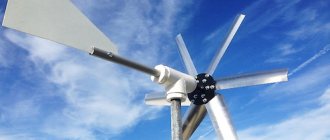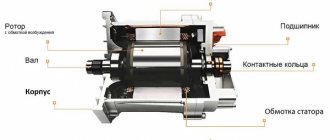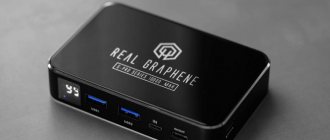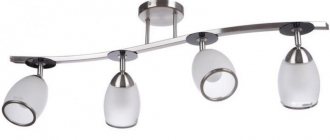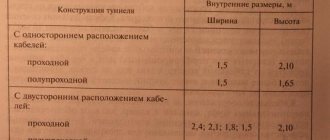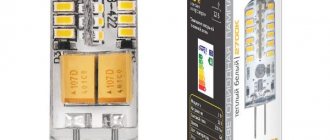The operation of a brushless electric motor is based on electric drives that create a magnetic rotating field. Currently, there are several types of devices with different characteristics. With the development of technology and the use of new materials characterized by high coercivity and a sufficient level of magnetic saturation, it has become possible to obtain a strong magnetic field and, as a result, valve structures of a new type, in which there is no winding on the rotor elements or starter. The widespread proliferation of high-power, low-cost semiconductor-type switches has accelerated the creation of such designs, simplified implementation, and eliminated many switching difficulties.
How does a brushless motor work?
There are many types of screwdrivers. To understand the advantages of each, you need to study their data and operating principles. This will allow you to understand which screwdriver is better, brushed or brushless, and in what cases they should be used. After all, all electric tools have different technical parameters.
At the end of the last century, changes occurred in the field of semiconductor electronics. This made it possible not to use the usual brushes. The mechanical method of connecting contacts in a brushless one was replaced by an amplifier.
Studying how a brushless screwdriver motor works, it can be noted that it is much more convenient during operation and provides higher torque. This type of engine wears out less, is quieter, and is protected from dirt getting inside.
Brush detail
In this case, the rotation speed is enhanced by the tension created inside, and not by centrifugal force. In this case, the engine operates in the desired mode without malfunctioning.
Even if current leaks in or the motor becomes magnetized, the speed will remain the same.
For normal operation, a commutator and winding are not required. And the built-in magnet is not as large as in brush equipment.
A brushless motor has a rotor and a stator, just like the elements of any motor. But there is no collector here. Therefore, its brushless version will be more reliable.
Interesting! Such devices are installed in low-power screwdrivers (up to 5 kW). In models with large parameters they are less effective.
Principle of operation
Increased reliability, reduced price and simpler manufacturing are ensured by the absence of mechanical switching elements, rotor windings and permanent magnets. At the same time, an increase in efficiency is possible due to a reduction in friction losses in the collector system. The brushless motor can operate on alternating or continuous current. The latter option has a noticeable similarity to commutator engines. Its characteristic feature is the formation of a magnetic rotating field and the use of pulsed current. It is based on an electronic switch, which increases the complexity of the design.
Design and principle of operation
The brushless tool has taken its place in the set of necessary tools. When purchasing equipment for a home, the owner must become familiar with the principles of its operation.
You can consider the features of how a brushless motor works in a screwdriver:
- The current here is switched in the stator windings. There is no coil on the armature, and the magnetic field is created using magnets installed inside the housing.
- The time when you need to connect electricity is regulated using built-in sensors. The Hall effect is used. Short electrical pulses and speed signals that regulate operation are sent to the built-in processor. This action is usually called a PWM signal.
- Alternately, the generated pulses are sent to amplifiers, which amplify the current. Inverters (amplifiers) are connected to a winding on the stator. These elements accumulate the current generated by the coils and transmit it from the internal processor using pulses.
As a result, a magnetic field arises, which causes the armature to rotate and the tool begins to work.
Brushless tool
Brushes are the weak point of the generator. There are brushless options, but they are rarely used. Why?
The most common and widespread design of a car generator today is using graphite brushes that supply voltage to the rotor winding (the so-called “field coil”) through a pair of rotating sliding contacts in the form of copper rings on the rotor shaft. This solution is used on most cars, with rare exceptions, because it has been proven and has proven its practicality over decades.
This design makes it extremely simple and effective to maintain a stable voltage in the vehicle’s electrical system at any speed of the engine and, accordingly, the generator - an electronic voltage stabilization unit (which is traditionally called a “regulator relay”) monitors the output voltage level and reduces or increases the current in the excitation coil. As soon as the voltage sags, the current increases. As soon as it approaches the upper limit of 14.2 volts, it decreases. This process occurs quickly and continuously, and as a result we have a stable voltage both at idle and at high speed.
The brush assembly is dry and poorly protected from sand and moisture. And everything that is open and rubs without lubrication gradually wears out and fails. It is the brush assembly that is the most common source of generator failure. Moreover, it is usually also integrally combined with an electronic voltage stabilization unit (“relay regulator”).
However, in recent years, the word “Brushless” (or its analogue “Brushless”) has been heard by the “broad masses” (c) - it has become known even to people relatively far from technology. Brushless electric motors are being actively promoted in a variety of areas of everyday life - today they fly quadcopters, spin screwdrivers, mow lawns, trimmers, and operate other mechanisms and gadgets. Even outspoken humanitarians have already been successfully convinced that “brushes are bad: they wear out, fail, get hot and cause current losses.” Why has the brush assembly still not disappeared in a car generator, while recently it is increasingly being abandoned even in the motors of cheap children's toys?!
Maybe because electric motors
, are we talking about
a generator
? No, that's not the point. There are no obstacles here. An electric motor and an electric generator are extremely similar electrical machines in their essence, in addition, they are often reversible: the motor is capable of generating current if it is forcibly rotated, and the generator can act as a motor if current is supplied to it from the outside.
It is possible to use a brushless generator in a car; this has long been implemented and practiced. However, such generators are produced in a very limited manner and for some reason have not become widespread... Why?
Making a car generator brushless is not that difficult in principle. What exactly are brushes for? To supply 12 volts of power through them to the field coil inside the rotating rotor. After which the segmented rotor with a coil, to which direct current is supplied from the battery, becomes a multi-pole electromagnet and generates a current in a stationary winding - in the stator.
It is possible to remove the sliding brush contact in a car generator due to the special design of the rotor. To do this, the rotor is made elongated, and the excitation coil is made in the form of an outer ring and fixedly mounted on the stator. After all, for the generator to work, the rotor must become a magnet, but it is not fundamental how to magnetize the rotor - with a coil inside or a coil outside...
The first brushless generators with a fixed excitation coil were found on cars half a century ago, and even earlier. As a rule, they were installed on commercial vehicles (long-distance trucks) and agricultural and construction vehicles (combine harvesters, tractors, bulldozers, etc.). The first was important for increased reliability and a reduced probability of failures on long stretches of the track, and the second was protection from the abrasive dust and moisture that constantly accompany them during operation, which can quickly kill the brush assembly by penetrating into the generator through the ventilation slots. In principle, they are used in limited quantities in such machines to this day.
However, you must agree: a generator that is not afraid of water and dust, with an increased service life due to the elimination of parts that rub dry - this is very good! And not bad for any generator, not just one installed on a truck or combine! Why hasn’t the technology spread to the mass passenger car segment? There are several reasons for this.
- The production technology of brushless generators is more multi-stage, and generators are ultimately significantly more expensive.
- With comparable production technologies (without expensive innovations), a brushless generator ends up being larger and heavier than a brushed generator with the same characteristics.
- Most truck and agricultural “brushless” engines had a relatively narrow range of operating speeds at which they were effective, and at idle and simply in lower gears they did not really charge the battery.
- Modern “brushless” engines have become significantly more complex in order to maintain compactness, while at the same time gaining the ability to deliver high currents from low speeds and not be afraid of high speeds. In addition to the stationary excitation winding, permanent magnets were added to the design to increase current output at low speeds, special demagnetizing windings that neutralize the effect of permanent magnets at high speeds, multiphase stators, and sophisticated diode bridges.
All this and a number of other factors have limited and continue to limit the spread of such generators. And after the evolutionary optimization of generators with brushes (which became more powerful, more compact, more linear, etc.), the advantages of “brushless” generators turned out to be even less pronounced. Despite the obvious wear and tear of the copper-graphite friction pairs, brush generators actually last a very long time and are not considered to be a potentially problematic vehicle component requiring innovative interventions.
However, in some cases, brushless generators are relevant not only for trucks and tractors. For example, there is no brush assembly on some generators of a number of BMW and Mercedes diesel crossovers. Their engines use high-power generators (180-190 amperes) with water cooling, which are screwed with their back cover to the cover of the engine water jacket with a corresponding hole, as if “plugging it with your butt,” and are thus partially washed with antifreeze. In the design of powerful water-cooled generators, brushes make layout and maintenance very difficult, so they are sometimes abandoned. Such generators are also commercially available in some trim levels of serious frame SUVs such as the Nissan Patrol. And UAZ drivers like to introduce 110-amp brushless generators from PAZ buses into their tuned “cutlets”, which are not afraid of swimming in the swamp. Well, the Altai Tractor Electrical Equipment Plant has been producing brushless generators in small quantities for VAZ models of the classic (01-07) and early front-wheel drive (08-099) families since Soviet times (and, it seems, to this day!).
However, in the end everything is decided by economics and partly by engineering. Today, in the mass consumer automobile industry, the reliability of the simplest brush generator is taken as an example of the balance of price, survivability and maintainability. And they deviate from this canon only in relatively rare cases, when the design of a technically complex, advanced and quite expensive car inevitably requires complicated and expensive solutions...
Advantages of brushless motors in theory
We have already figured out the structure of a brushless motor and now it is worth considering the positive and negative aspects of such tools.
There are several advantages of such engines:
- They do not have the problems that brushed models have. They are more resistant to wear, since the brushes do not produce internal friction. The fire rate is also lower. The absence of sparking allows you to work in the most difficult conditions.
- Easier torque control system. The number of levels (15) allows you to immediately select the desired mode and simply press a button. They have a higher level of efficiency.
- Economical in terms of energy use. This is especially true. If the engine is battery-powered. The tool can be used on any material.
Important! In addition, brushless motors can produce maximum rotation almost immediately.
What is a servo motor?
The CNC servo motor is an electric motor with position feedback. It receives a control signal, by which it changes the position of the rotor by a given amount, monitors this change and controls the power parameters. The presence of feedback is the main difference between servomotors and stepper motors, which use a step counting system to determine movements.
The servo drive consists of the following elements:
- electric motor;
- rotor position sensor (Hall sensors or encoders are most often used in CNC machine drives);
- control signal converter;
- power supply (inverter or frequency converter).
The operating principle of a servomotor with the simplest control circuit is based on comparing the specified movement with the readings of a feedback sensor. Voltage is supplied to the windings through a relay. CNC motion drives use more complex control circuits based on logic controllers. They have a number of advantages that are important for the operation of the machine:
- the ability to select power in accordance with the tasks;
- automatic compensation of backlashes, gaps associated with wear, seasonal and operating temperature deformations;
- instant detection of failure - jamming, failure of electronic components;
- high travel speeds not available for stepper motors.
The benefits of brushless tools in practice
Theoretical advantages are fully realized in practice. This must be taken into account when choosing a brushed or brushless screwdriver; you can find out which motor is better after working with it.
Experts note that such a tool:
- Much lighter and smaller in size. Compactness makes it possible to work in difficult places and carry even in a regular bag.
- More powerful and efficient in energy consumption. The modern operating principle of the motor, based on the use of electronics, improves user performance.
- Brushless cordless models work on a single charge for quite a long time. Compared to classic engines, this is 30% more.
- Due to the low heat generation, no additional cooling or interruptions during operation are required.
- When working, it does not make too loud sounds or give sudden jerks.
- No sparks. This allows you to work in difficult conditions near fuel tanks and gas appliances.
- Easy to maintain. No need to buy or select brushes.
- It breaks less often, since the absence of a brush allows you to work even under high loads without fear of clogging the engine.
Servomotors in MULTICUT machines
The MULTICUT company produces portal-type milling and engraving machines designed for processing materials of various hardnesses. We have developed five series of machines designed for different loads. One of the advantages of the equipment is the ability to select displacement drives. The machines are equipped with stepper motors as standard. If necessary, they can be replaced with AC servo drives from leading manufacturers of industrial automation and drive systems:
DELTA. ASDA-B2 series servo motors in the power range from 100 W to 3 kW are characterized by high operating accuracy thanks to the built-in encoder with a resolution of 160,000 pulses per revolution. Models with a power of 400 W or more have a built-in braking resistor. The drive features improved acceleration dynamics. Acceleration time from -3000 to +3000 rpm at idle is less than 10 ms. ESTUN. The EMG series servo drives are designed for powerful machines that require high performance. Thanks to powerful permanent magnets using rare earth metals, the manufacturer managed to achieve high power characteristics with compact dimensions and a wide range of rotation speeds. The built-in incremental or absolute encoder ensures high positioning accuracy and rapid system response to parameter changes.
The drives have the ability to control position, speed and torque based on instructions. The last two parameters are also controlled by internal parameters.
You can ask questions about choosing motion drives for MULTICUT machines to a consultant via online chat or by phone.
Why are brushless tools so expensive?
The main disadvantage of such a tool is its high price. It is due to the presence of an expensive power board and electronic control. Thanks to this, the electric motor becomes more reliable.
But the high cost of such a tool sometimes becomes a decisive factor when purchasing a tool. Which screwdriver is better, brushed or brushless, each user decides for himself. And many are inclined to favor a cheaper product.
Important! Replacing parts with brushless tools is always expensive.
Brush electric motor
A brush motor generates torque directly from power applied to it using an internal commutator, stationary magnets (permanent or electromagnetic), and rotating electromagnets.
The advantages of brushed motors are: low production cost, high reliability, and easy speed control. Disadvantages of brushed motors: high operating costs and short service life with high intensity use.
Maintenance includes regular replacement of the graphite brushes as well as cleaning or replacing the commutator. These components are important for transmitting electrical energy to the rotor winding.
Is it worth buying a tool with a brushless motor?
If you need a tool several times or just for home use, then it is better to choose a cheaper option. But professionals need a reliable and powerful screwdriver that will pay for itself very quickly. This can be understood by seeing how a brushless screwdriver works and how many processes can be done with it without interruption.
You can wait until the technology becomes more accessible. After all, it was introduced not so long ago and the new engines with which they are equipped are too expensive, unlike conventional ones. When analyzing the price, the difference will be 30-50%. Such overpayments are too significant to buy a tool just to have a home.
Operation of a brushless screwdriver


